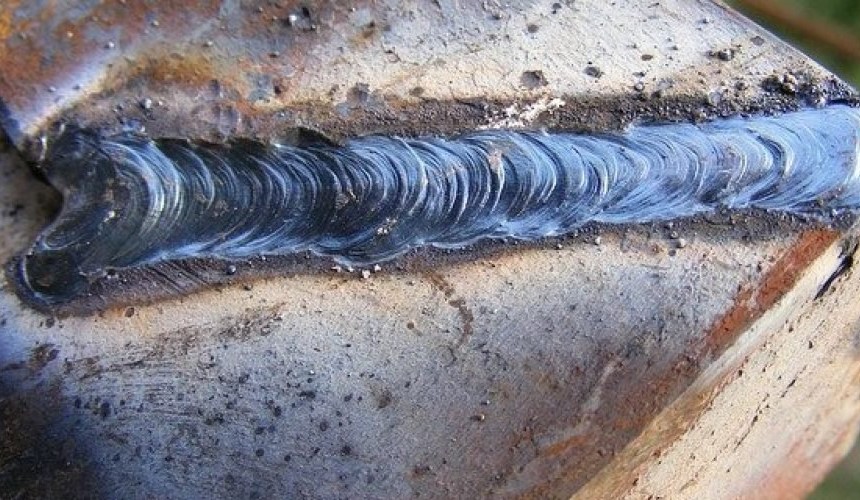Reliable Ways to Prevent Weld Undercut in Your Welding Projects
Necessary Tips for Welders: Preventing Undercut Welding and Ensuring Stronger Weld Joints
In the realm of welding, accomplishing sturdy and solid weld joints is the foundation of producing premium work. One common obstacle that welders usually come across is undercut welding, which can jeopardize the integrity of the weld joint.

Recognizing Undercut Welding
Undercut welding is a typical welding issue that happens when the weld steel fails to properly fill up the groove and causes a groove-like anxiety along the weld grain. This defect deteriorates the weld joint, making it susceptible to breaking and failing under tension. Damaging can be brought on by various aspects, consisting of excessive welding present, high welding speed, improper electrode angle, inaccurate electrode dimension, and poor welding technique.
One of the major factors for undercut welding is an imbalance in between the welding existing and the welding rate. If the welding current is expensive or the welding speed is as well quickly, the weld steel may not sufficiently load the groove, leading to undercutting. Additionally, utilizing an electrode that is as well huge can result in a similar outcome, as the excess metal can not correctly stream right into the groove.
To avoid undercut welding, welders should ensure they are utilizing the correct welding parameters, maintain an appropriate electrode angle, select the suitable electrode dimension, and technique correct welding strategies. By resolving these variables, welders can decrease the threat of undercutting and produce stronger, much more trustworthy weld joints.
Appropriate Welding Method
Effective welding strategy plays a vital function in ensuring the top quality and stability of weld joints. One basic element of proper welding technique is preserving the correct angle and range between the welding weapon and the workpiece.
In addition, a constant and steady hand movement is crucial for producing solid and resilient weld joints. Welders should go for smooth, uniform activities to guarantee also distribution of the weld product. Correct control of the welding weapon and filler material is additionally key to accomplishing optimal penetration and blend.
Additionally, regulating the heat input and choosing the appropriate welding specifications based upon the material being welded are critical elements in attaining premium welds - Preventing weld undercut. Welders should comply with the advised setups offered by welding procedure requirements and adjust them as needed based on the certain needs of the project. By grasping appropriate welding strategies, welders can considerably improve the toughness and integrity of their weld joints
Choosing the Right Electrode
When taking into consideration the relevance of choosing the right electrode in welding applications,Maintaining the appropriate angle and distance between the welding gun and the workpiece is fundamental. The choice of electrode plays an important function in figuring out the high quality and stamina of the weld joint. Electrodes are available in different types, each created for certain objectives and products.
First of all, choosing the suitable electrode size is essential. Thinner electrodes are suitable for welding thin materials, while thicker electrodes are better for thicker products and greater warm applications. Matching the electrode diameter to the thickness of the work surface aids accomplish a balanced weld.
Second of all, comprehending the material composition of the electrode is important. Different electrodes are designed for welding details products like steel, stainless-steel, aluminum, or cast iron. Using the correct electrode product makes certain great combination and reduces the risk of issues in the weld.
Last but not least, taking into consideration the welding setting and technique is essential when choosing the electrode kind. Certain electrodes are much better fit for vertical or overhanging welding click this link placements, while others work well for level or horizontal positions. Picking the best electrode based upon the welding method enhances the total weld quality and honesty.
Preparing the Base Metal
To ensure an effective welding process, what first steps should be taken when preparing the base steel for welding? Correctly preparing the base metal is essential for achieving strong and long lasting weld joints. The very first step in preparing the base metal is to cleanse it thoroughly to get rid of any impurities such as rust, dirt, oil, or paint. This can be done making use of a wire chemical, grinder, or brush address solvents. In addition, any existing weld material or deposit from previous welding should be eliminated to guarantee a tidy surface area for the new weld.

Performing Post-Weld Assessments

After performing these analyses, welders have to contrast the outcomes against industry criteria and task demands to make sure that the weld joint satisfies all required criteria. Any kind of inadequacies or discrepancies uncovered during the post-weld evaluation should be without delay attended to with appropriate rehabilitative procedures to ensure the weld's integrity. By faithfully doing post-weld evaluations and promptly attending to any type of concerns, welders can maintain the quality and integrity of their work, ultimately adding to the safety and long life of the welded frameworks.
Final Thought

Finally, avoiding undercut welding and making certain stronger weld joints call for a combination of correct welding technique, picking the right electrode, preparing the base steel correctly, and carrying out post-weld see here now inspections. By comprehending the causes of undercut welding and carrying out the necessary safety measures, welders can generate premium weld joints that fulfill industry requirements and ensure the structural stability of the bonded components.
Undercut welding is a typical welding issue that occurs when the weld metal falls short to properly fill up the groove and results in a groove-like clinical depression along the weld bead (Preventing weld undercut). Undercutting can be triggered by numerous factors, including extreme welding existing, high welding rate, improper electrode angle, incorrect electrode size, and bad welding strategy
One of the major reasons for undercut welding is a discrepancy between the welding existing and the welding rate. If the welding current is also high or the welding speed is too fast, the weld metal may not effectively load the groove, leading to damaging.Maintaining the correct angle and distance between the welding weapon and the work surface is basic when considering the significance of selecting the ideal electrode in welding applications.